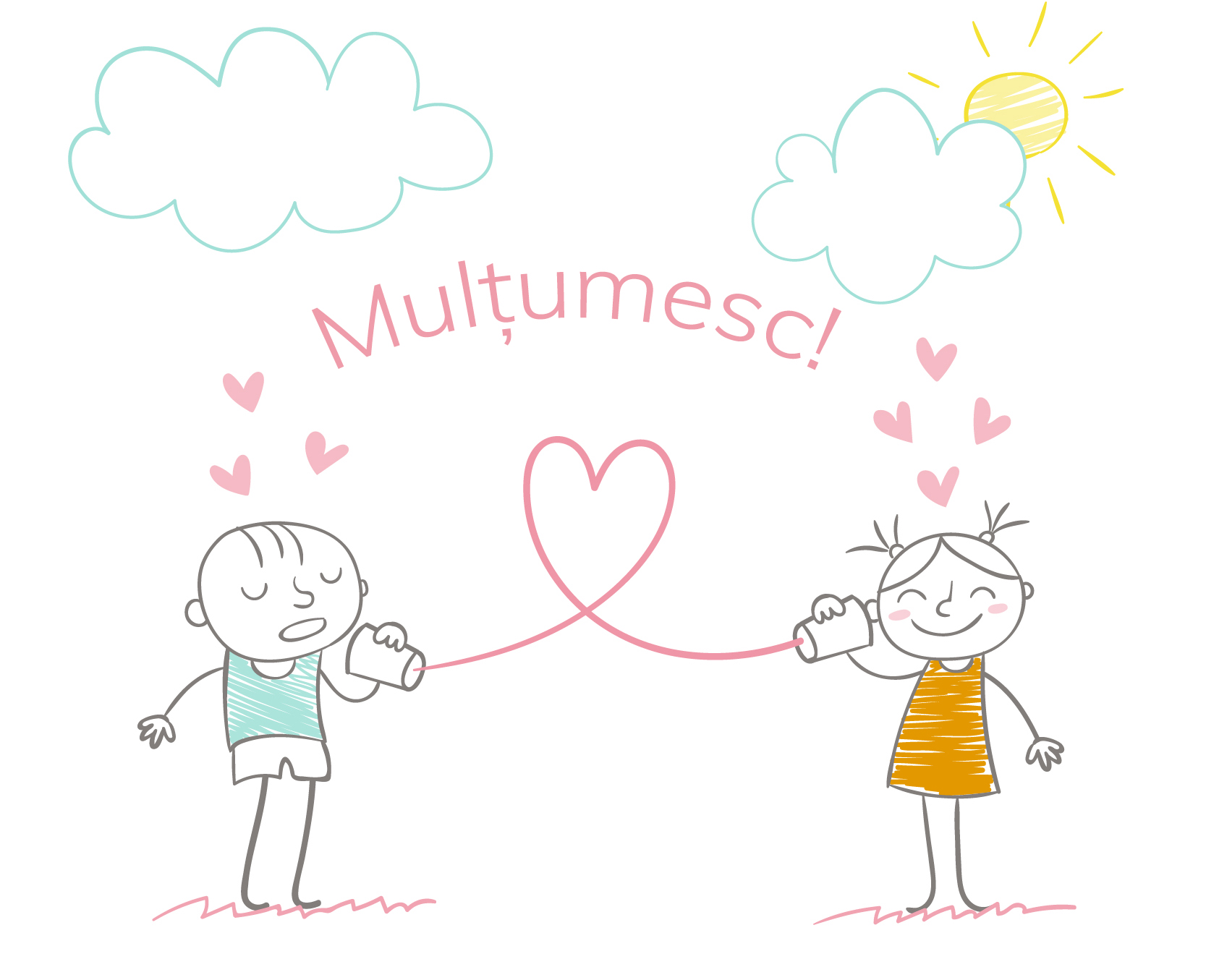
Gratitude – how it can transform your life
Gratitude it is an emotion similar to appreciation, an emotion that plays a fundamental role in a person's well-being and success.
Expressing contentment in the face of life becomes an all the more valuable practice when we are exposed to times of challenge and change, such as those we are currently experiencing.
Gratitude is something that brings us enormous benefits in life, that we have access to at any time, with no cost attached and without taking up too much time.
So, developing an attitude of gratitude in our children becomes perhaps one of the most important gifts we can give as parents.
You may be wondering why?
In 2006, psychologists Nansook Park and Christopher Peterson conducted a study, after which they discovered that the state of gratitude experienced by participants was directly and strongly correlated with the level of satisfaction people felt with their own lives.
Studies have also shown that feeling, living and showing gratitude helps children look at life in a positive way and develop stronger relationships with family and friends, feel more connected to the community, be more happier, more optimistic, more empathetic, more aware and grateful for what they have.
When we practice gratitude in the family, children live in a positive emotional state of inner joy, security and confidence. They also feel more connected to family members and manage to develop a deeper relationship.
But what does it actually mean to live an attitude of gratitude?
It means making a habit of expressing gratitude and appreciation for all aspects of your life, regularly, daily, for both the big and the small things.
Lewis Howes advises us: "If you focus on what you have, you will always have more. If you focus on what you don't have, you'll never have enough."
An essential part in the process of developing this attitude is to understand that gratitude means much more than automatically saying a simple "Thank you". According to a recent study (Halberstadt, 2018), gratitude develops over time, and that of connection (connective) it represents the full, deep, and conscious form of appreciation we wish to develop. It is that gratitude spoken from the heart, which is felt by both sender and receiver, which refers to an awareness and acceptance of the good in our lives. Gratitude of connection type (connectives) it is the one that leads to the increase in the state of happiness.
Scientists have identified 4 parts of gratitude which we can use in the form of questions in developing this attitude in our children:
- Notice (e.g. you can ask the child: you noticed how did he prepare your food Did you notice how he made your toy? By asking, help your child observe more deeply and become aware of what they can show appreciation for)
- Think (ex: Why do you think you got …..?)
- Feels (eg How does it make you feel …..?)
- Show / Manifest (ex Do you want us show how are you feeling?)
Here is a video that can better explain how we can use these parts of gratitude:
Studies show that regardless of age, children, teenagers, adults, all those who have an attitude of gratitude firmly built intrinsically, are less exposed to jealousy, depression or materialism. In addition, they feel better in their community, have closer relationships, are more involved, have better school results, are happier, optimistic and enthusiastic.
How can we nurture and develop this skill in our children?
Gratitude cannot be taught, through words or on a blackboard. The facts speak for themselves. Children do what they see, not what they hear.
So, once again, the best teachers are the parents!
So here are a number of activities for you to do, alone or with your child/children, activities that encourage the expression and development of gratitude by focusing attention on the good things in your personal life.
And since repetition is the mother of learning, we invite you to define a daily practice in doing them. The key to success is persistence!
- Give yourself time for introspection, pause and sharing with your child about the things you appreciate in your life that you could easily take for granted.
For example, you can challenge him to imagine what life would be like without the Internet or mobile phone, without parks and out in nature (as is the situation we are forced to be exposed to these days).
During a walk, you can talk about and show appreciation for the simple joys in life, like warm sunshine or chirping birds.
You can use these moments to ask and discover what your child is grateful for.
- Leave a space of 5-10 minutes at the end of the day, to ask your child what they are thankful for that day
Sometimes it is difficult for children to synthesize or to be aware, that is why you can help them with expressions like: "I am grateful to mom and dad when they have..."; "I'm grateful to have eaten / made / learned…."
- Today was a great day! – Ask your child to say 3 good things that happened to him that day: 1 thing that made him feel happy, 1 thing he is thankful for and the best thing of the day. Add it by asking him how he contributed to those 3 things
- You can create a jar of gratitude and encourage all family members to post notes whenever they feel gratitude/appreciation for something or someone
- You can also create a “board" of gratitude. Imagine how every day, at dinner time, all family members write down on the board or on post-its the good things of the day that they are grateful for. What a deep bond is created between them!
- make compliment to a person
- Write a letter of gratitude showing a person why you appreciate them. Encourage your child to do the same. Studies have shown that it doesn't matter if you send the letter or not. Just writing it down helps a lot
- A wonderful exercise, child or adult, is: I am grateful to MYSELF for who I am . The exercise is to write 3 things you are grateful for, skills you have and are grateful for, something you did recently that made you feel proud of yourself
- Always look for something positive in all frustrating situations and talk about it (What a good time for this exercise is the context of COVID-19, right?)
.Is your child very young? You can use the drawings!
Younger children may not have the cognitive ability to write or talk about the things they are grateful for. In their case, you can use the drawings. Young children love to draw and create little "works of art" that they can be proud of.
Here are 10 drawing homework ideas that you can use with your little ones.
My dear / My dear, draw …….
- Something that makes you happy
- Something you couldn't live without
- Someone who helps you
- Someone who makes you smile
- What do you enjoy doing?
- What are you thankful for?
- Someone you love
- What do you think is funny / fun?
- What makes you feel good
- what makes you laugh
Building the power to feel gratitude takes time, reflection and persistence, but the benefits are enormous.
Practicing gratitude is one of the most valuable and reliable methods in increasing happiness and satisfaction in life, in having good physical, mental, emotional and relational health.
It's worth the effort!
An article and two recommended videos:
- The gratitude experiment
- How to Talk with Kids about Gratitude
- What is gratitude and why is it so important?
*Article written by Carmen Iorgulescu, KEN Academy Coordinator
